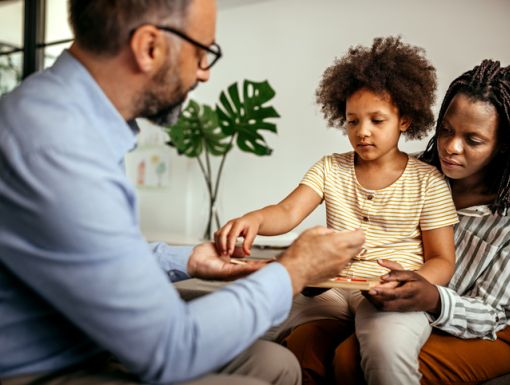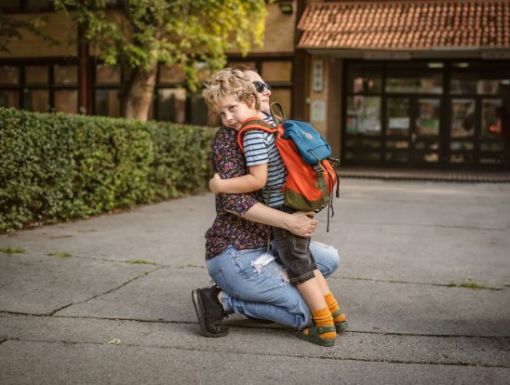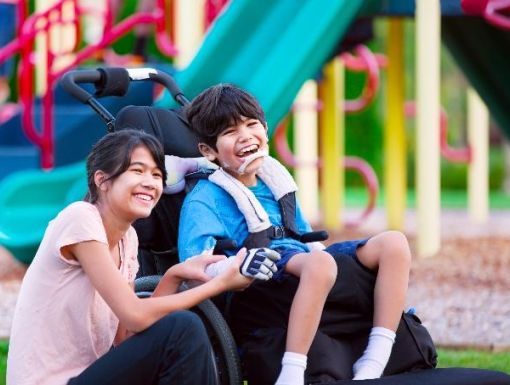
How to Handle Behavioral Problems in Children with Special Needs
Children with intellectual or developmental disabilities have a higher risk of developing different types of unsafe or harmful behaviors such as hitting, spitting, throwing items or self-injury. These behaviors can range from mild to severe and can sometimes become a barrier to the child and family’s ability to continue through their daily activities. Caregivers are encouraged to seek assistance with addressing behavior problems as soon as they are noticed. Professionals such as Board Certified Behavior Analysts (BCBA) or behavioral psychologists have special training to assess and provide treatment for unsafe or harmful behaviors. Early intervention for behavior problems can often result in faster progress.
What should you do if your child starts to engage in problem behaviors?
To address harmful or unsafe behaviors, a functional assessment should be done to figure out why the child is engaging in these behaviors. A functional assessment is an ongoing observation of your child by a professional who will then offer recommendations and ways to turn negative behavior around. Functional assessment is often considered the gold standard when treating concerning behaviors that may be unsafe or harmful. This process focuses on determining the things that might be triggering these concerning behaviors and the ways others respond when they are observed. During the assessment, the professional will also consider other factors that might be contributing to why these behaviors are happening such as pain, illness or anxiety, to name a few. This information can then be used to suggest support strategies that teach safer ways for the child to respond to the triggers and other contributing factors. The information is also used to suggest strategies to reduce how often these behaviors are observed, how intense these behaviors are, and how long these behaviors last.
At the most basic level, treatment of harmful or unsafe behaviors should focus on prevention and the things that can be changed before a concerning behavior happens. These changes can sometimes decrease the chances these behaviors happen at all. Another important part of treatment is teaching the child a better way to get those same wants or needs met. This is an important step in the treatment process and should always be a part of a treatment plan. Finally, treatment programs will look at how others respond to behavior and consider the ways these responses might influence the behavior. Suggestions can then be made for how to change those responses to better support the child while also being mindful of how responses to concerning behavior can influence whether it continues to happen in the future.
Below we outline some considerations when working to reduce and replace unsafe or harmful behavior. Keep in mind, these strategies are most effective when they are based on the reasons why the behaviors are happening for each individual child.
Reducing problem behavior
- Does your child have a way to let you know what they want or need? Sometimes problem behaviors become a child’s way of letting others know they want or need something. This can be especially true for children who have trouble with language or communicating. Anytime you notice that your child needs something, try not to anticipate their needs. Instead, show them how to ask for it. You can teach them to point to what they want, point to a picture, use a simple sign or gesture, or use their words to do so. By giving them a better (and hopefully easier) way to get something they want or need, you may see behavior problems improve because the child no longer has to use their unsafe or harmful behaviors to get those things.
- Is your child getting enough attention for the behaviors you want them to do more of? It is often easy to overlook the things our children should be doing because it’s what’s expected. When children do things they should not do, it often immediately draws attention. Sometimes just focusing more attention on the things you want to keep happening and less on the things you don’t want to happen can help to shift behavior from challenging to appropriate.
- Does your child have access to fun and engaging toys or materials, activities and interactions from others? Behavior problems are more likely to happen when there’s nothing better to do or there’s no one around to play with or hang out with. Be sure you have lots of fun things available for your child to play with or do. You also want to make sure they are getting lots of positive attention and interactions. Have a plan for times when you have to pull your attention away (for example, it’s time to make dinner or take a phone call). Make sure they have access to things they like. Spend time playing or talking with them before starting what you need to do and then plan to check in every so often. This can help lessen their need to act out in undesirable ways to get your attention. Be sure to change up your interactions and the things available based on what the child likes and prefers. You should also consider the child’s age when thinking about the best way to hang out or interact with them.
- In times when behavior problems are most likely, are your child’s basic needs being met? Individuals with intellectual or developmental disabilities sometimes have difficulty letting others know when they are hungry, thirsty, tired or not feeling well. Addressing these needs may lessen the likelihood of behavior problems. For example, if your child is more likely to hit others when they are hungry, you can build in more frequent snacks across the day, move up lunch time, or teach them to point to a picture of a snack instead of hitting. For teens and adults, you should also consider whether behavior challenges are related to a need for independence or alone time. When someone desires independence or alone time and they can’t have it, it can set up situations that trigger negative behaviors. It’s easy to overlook independence or alone time as a need. Focus on teaching skills that foster independence, and also provide them with some time to themselves across the day (and be sure to honor requests for alone time).
Addressing problem behavior can be a complex process and no one strategy is guaranteed to eliminate problem behavior in all situations. Any behavior intervention program needs to be suited to meet your family’s and your child’s specific needs and situation. Treatment of unsafe or harmful behavior should be guided by specially trained therapists such as a BCBA or behavioral psychologist, especially if your child is engaging in more severe types of problem behavior.
If you would like more information about problem behavior related to intellectual or developmental disabilities or if you have a child or loved one with a developmental disability who exhibits these types of behaviors, please call the Michael R. Boh Center for Child Development.
Learn more about the Michael R. Boh Center for Child Development.



